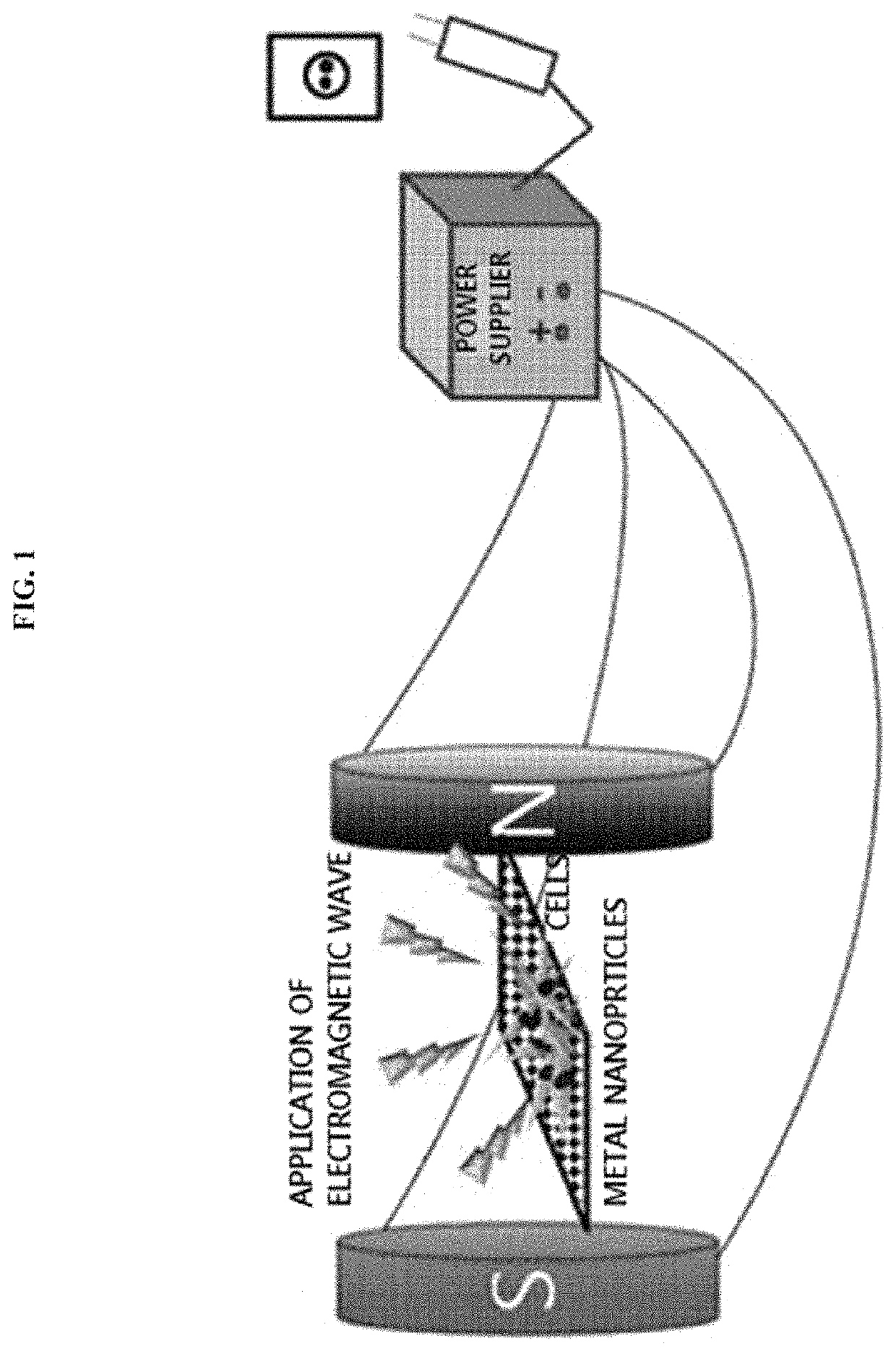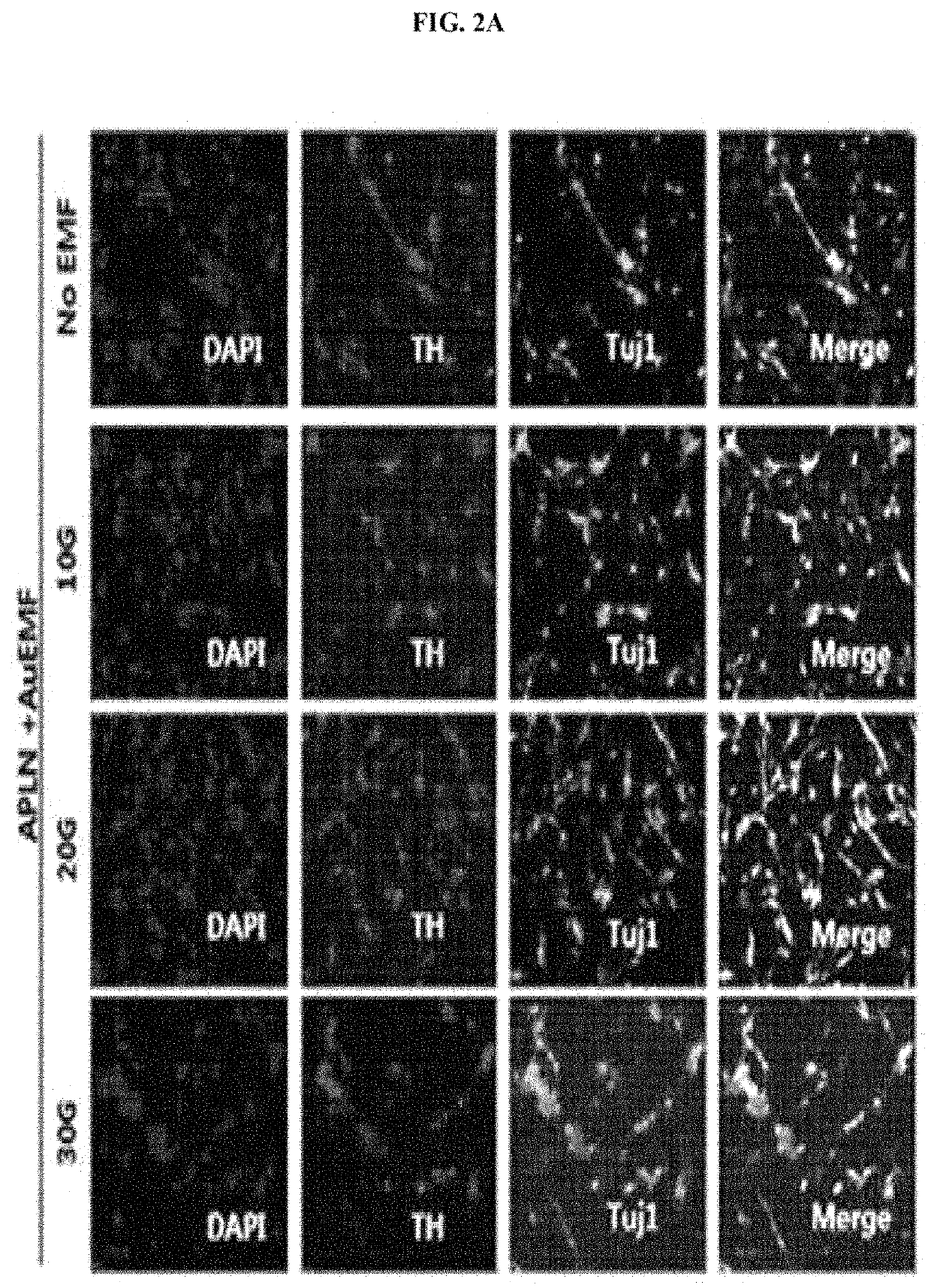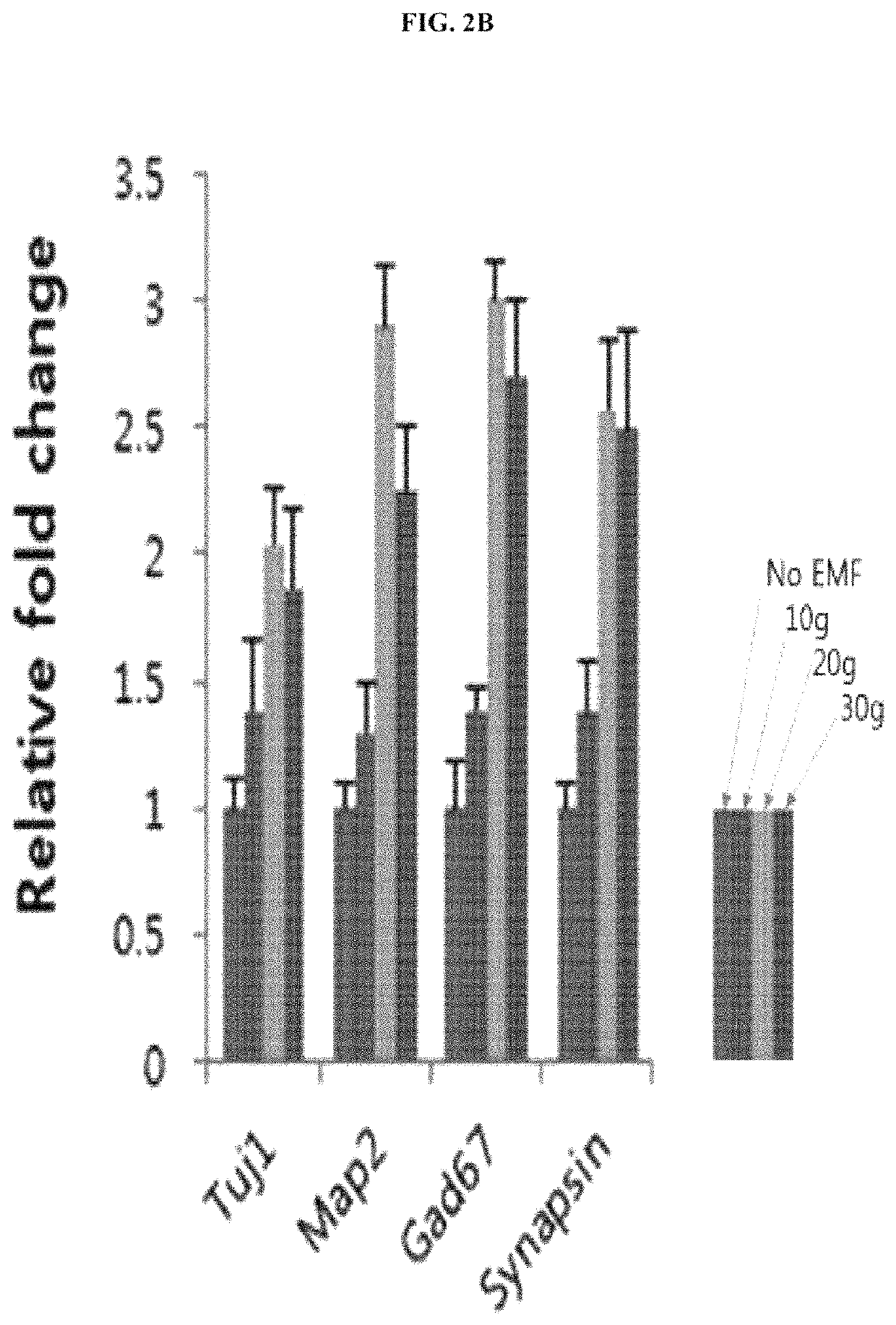Method for direct transdifferentiation reprogramming into neurons using electromagnetic-induced metal nanoparticles
a technology of electromagnetic induction and metal nanoparticles, which is applied in the direction of genetically modified cells, skeletal/connective tissue cells, peptide sources, etc., can solve the problems of not having a high direct transdifferentiation efficiency into neurons, unreasonable to substantially apply the technology to a clinical setting, and inability to efficiently treat neural diseases. , to achieve the effect of fewer side effects
- Summary
- Abstract
- Description
- Claims
- Application Information
AI Technical Summary
Benefits of technology
Problems solved by technology
Method used
Image
Examples
example 1
ation of Effect of Inducing Direct Transdifferentiation into Neurons Using Metal Nanoparticles Magnetized by Electromagnetic Field
[0064]The present invention is a technology of inducing direct transdifferentiation reprogramming of adult cells into neurons using electromagnetic-induced metal nanoparticles, and as an example, as illustrated in FIG. 1, fibroblasts pre-treated with a transcription factor were directly transdifferentiated into neurons by using a plate coated with gold nanoparticles, in which electromagnetism was induced by an electromagnetic field. More specifically, the present Example is intended to verify a change in activity of direct transdifferentiation into neurons according to the intensity and wavelength of an external electromagnetic field.
[0065]1-1. Change in Direct Transdifferentiation Efficiency According to Intensity of Electromagnetic Field
[0066]In order to evaluate the activity of direct transdifferentiation of fibroblasts according to the change in inten...
example 2
ation of Effects of Efficiently Inducing Direct Transdifferentiation into Neurons Using Various Metal Nanoparticles
[0071]In Example 1, direct transdifferentiation into neurons was induced using gold nanoparticles among metal nanoparticles and an electromagnetic field, whereas the present Example intended to verify whether the direct transdifferentiation efficiency into neurons could be enhanced even when various metal nanoparticles are used. Specifically, among metal nanoparticles, silver nanoparticles and magnetic nanoparticles were used, and the changes in aromatic amino acid decarboxylase (AADC) which is a neuronal marker gene by electromagnetic-induced silver or magnetic nanoparticles were quantitatively compared through RT-PCR.
[0072]As a result, as illustrated in FIG. 4, it was verified that in all the groups in which silver or magnetic nanoparticles were used, AADC was significantly increased as compared to the control which was not electromagnetically induced, and it could be...
example 3
ation of Effects of Inducing Direct Transdifferentiation into Neurons in Animal Model
[0073]The present Example intended to verify effects of inducing direct transdifferentiation into neurons according to the present invention in vivo by using an animal model. For this purpose, as illustrated in FIG. 5, Ascl1, Nurr1, Pitx3, and Lmx1, which are transcription factors, and gold nanoparticles were injected into the brain of a mouse and an electromagnetic field was applied thereto, and in this case, the changes in TH and Tuj1 which are neuronal marker genes were identified through immunostaining and fluorescence microscopy. As a control, a group (Auptl), to which the transcription factor and metal nanoparticles were administered and the electromagnetic field was not applied, was used.
[0074]As a result, as illustrated in FIG. 6, in the group (EMF) to which the electromagnetic field was applied as compared to the control, TH and Tuj1 were significantly increased, meaning that the direct tra...
PUM
| Property | Measurement | Unit |
|---|---|---|
| frequency | aaaaa | aaaaa |
| frequency | aaaaa | aaaaa |
| frequency | aaaaa | aaaaa |
Abstract
Description
Claims
Application Information
 Login to View More
Login to View More - R&D
- Intellectual Property
- Life Sciences
- Materials
- Tech Scout
- Unparalleled Data Quality
- Higher Quality Content
- 60% Fewer Hallucinations
Browse by: Latest US Patents, China's latest patents, Technical Efficacy Thesaurus, Application Domain, Technology Topic, Popular Technical Reports.
© 2025 PatSnap. All rights reserved.Legal|Privacy policy|Modern Slavery Act Transparency Statement|Sitemap|About US| Contact US: help@patsnap.com



